#frank reicher
Explore tagged Tumblr posts
Photo


Lost and Won (Frank Reicher, 1917)
102 notes
·
View notes
Text


Films Watched in 2024: 98. The Mummy's Ghost (1944) - Dir. Reginald Le Borg
#The Mummy's Ghost#Reginald Le Borg#Lon Chaney Jr.#John Carradine#Robert Lowery#Ramsay Ames#Barton MacLane#George Zucco#Frank Reicher#Harry Shannon#The Mummy#Universal Monsters#Classic Horror#Films Watched in 2024#My Edits#My Post
54 notes
·
View notes
Text

#movies#polls#king kong#king kong 1933#king kong movie#30s movies#old hollywood#merian c. cooper#ernest b. schoedsack#robert armstrong#fay wray#bruce cabot#frank reicher#victor wong#requested#have you seen this movie poll
89 notes
·
View notes
Text

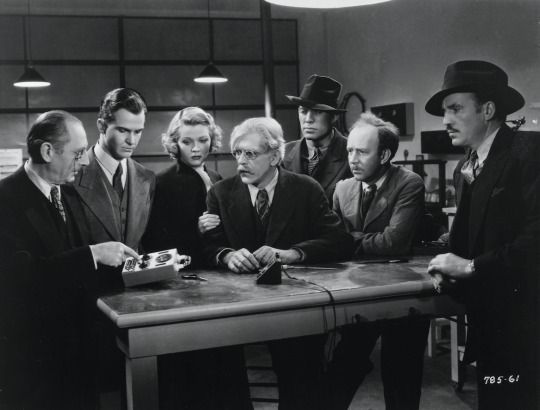
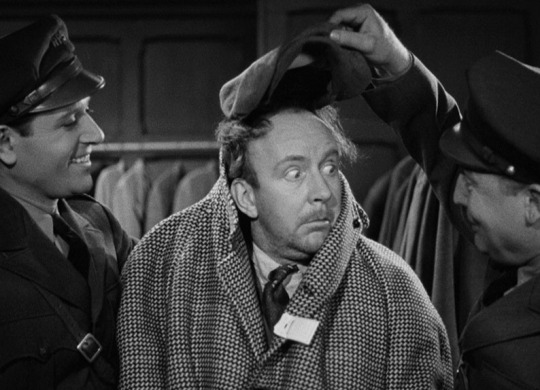


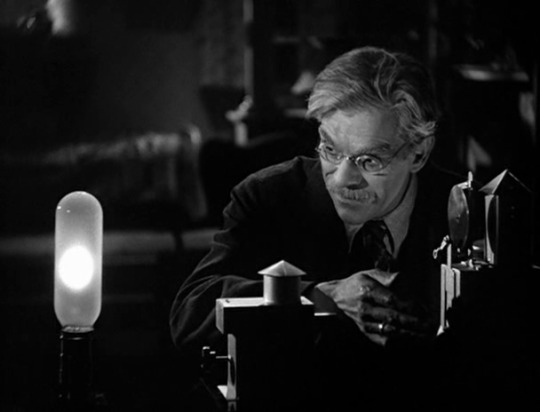
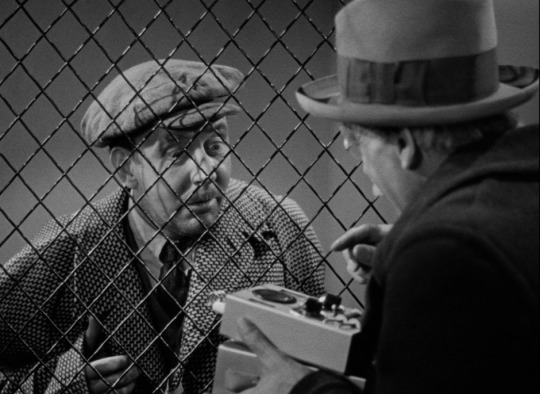
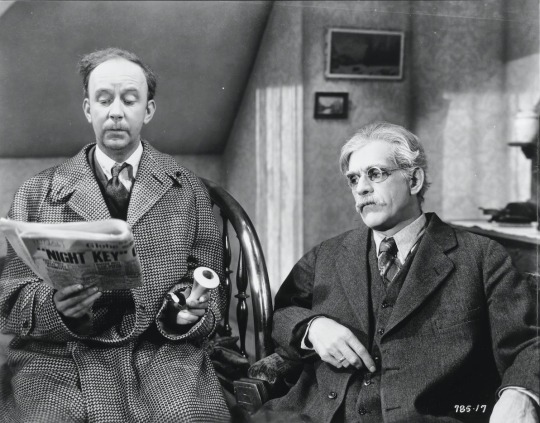
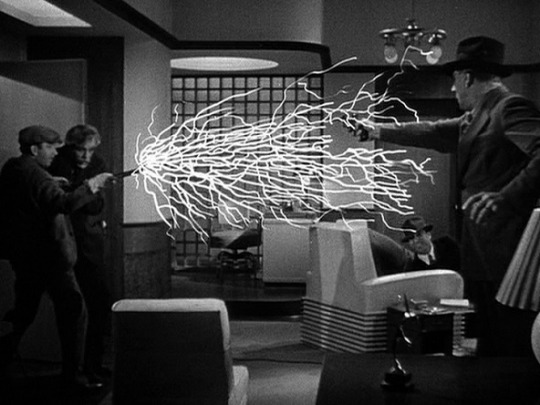
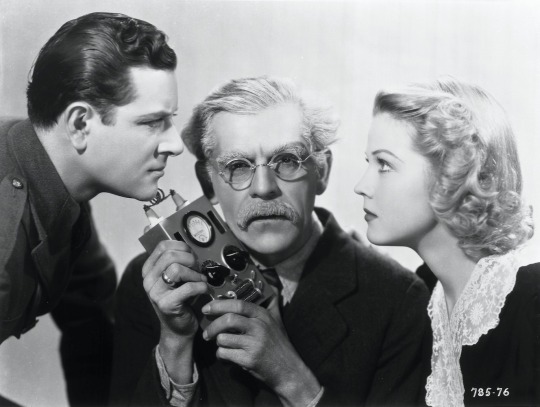
Night Key (1937)
"Now, listen, Steve. Twenty years ago you robbed me of the patent rights of the system that you're now using. Perhaps there was some excuse for that: because it gave you wealth, success, position, all the things that tempt one man to rob another. But now that you have everything and I have nothing, what possible reason is there for you to do this to me again?"
#night key#lloyd corrigan#1937#boris karloff#tristram tupper#jack moffitt#william a. pierce#warren hull#jean rogers#alan baxter#hobart cavanaugh#samuel s. hinds#david oliver#ward bond#frank reicher#edwin maxwell#george cleveland#george humbert#charles c. wilson#light hearted karloff vehicle which doesn't really deserve the sci fi label it's been given; yes‚ BK is an inventor of slightly fantastical#gadgets‚ but mostly this film is concerned with big business skullduggery with a side of organised crime. Karloff‚ as he often did‚ is#playing older than he was but he's very good and highly sympathetic as the doddery old prof. there's lots of good performances here‚ from#Jean Rogers' charming daughter to Warren Hull's romantic interest (much less tiresome than the usual role fillers in these movies) and#special mention to Hobart C as a delightfully seedy smalltime crook who attaches himself to BK like a stray dog. the only dud note is#Alan Baxter's weirdly monotone turn as the big bad‚ lacking any of the threat the character needs. the ending is twee and silly and there's#some (understandably) shaky fx work but this is genuinely a very fun time and a pleasant change from the usual Karloff vehicle of the era#one jarring moment: there's a very brief moment where a plot related news bulletin is heard on the radio‚ and as soon as it's finished the#news announcer begins to turn to the 'news from Spain' but the radio is switched off and the film moves on before we hear any more; this is#1937 remember‚ a moment of global tumult and thick in the gathering storm of the years to come but this is the only moment that the real#world is allowed to intrude into the charming and slighty silly world of eccentric inventors and sinister crooks
8 notes
·
View notes
Text
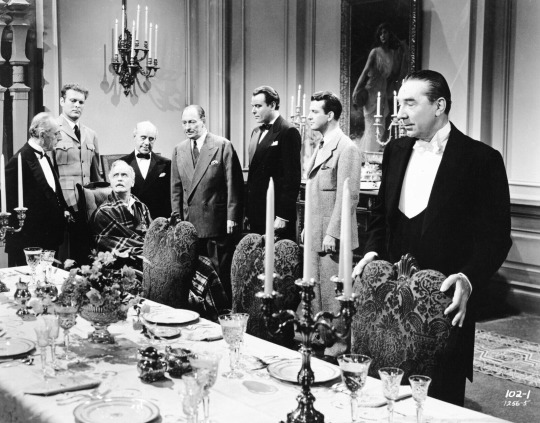
Bela Lugosi, Leif Erickson, Nils Asther, Lionel Atwill, Ralph Morgan, Francis Pierlot, Don Porter, and Frank Reicher in Night Monster (1942)
#night monster#bela lugosi#lionel atwill#leif erickson#francis pierlot#nils asther#ralph morgan#don porter#frank reicher#1942#1940s movies#ford beebe#mystery#universal horror
28 notes
·
View notes
Text
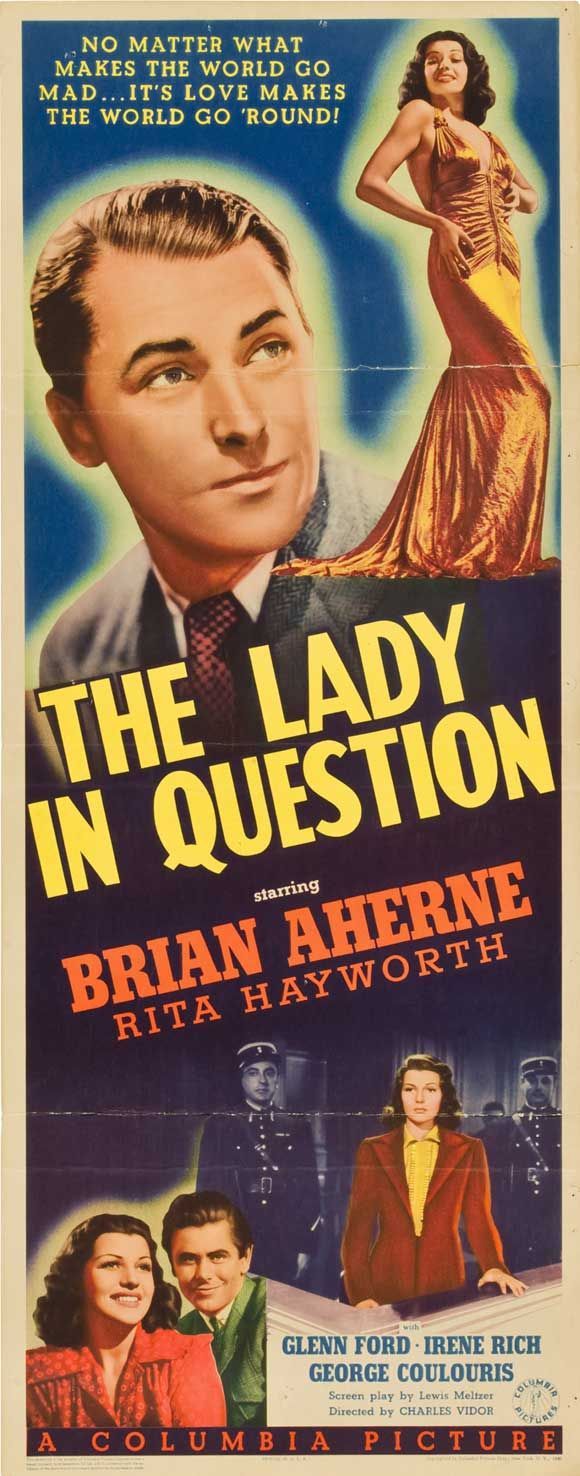





The Lady in Question (1940) Charles Vidor
July 14th 2024
#the lady in question#1940#charles vidor#brian aherne#rita hayworth#glenn ford#evelyn keyes#irene rich#curt bois#edward norris#sumner getchell#frank reicher#george coulouris#Gribouille#hearts of paris#it happened in paris
3 notes
·
View notes
Text
youtube
Clássico inovador: "O delírio de um sábio" (Dr. Cyclops, 1940)
#Dr. Cyclops#40's movies#classic movies#sci fi#Ernest B. Schoedsack#Albert Dekker#mad scientist#Janice Logan#Thomas Coley#Charles Halton#Victor Kilian#William Wilkerson#Frank Reicher#Paul Fix#Youtube
1 note
·
View note
Text
Nacherzählt: Hatul Madan
Der große russische Dichter Alexander Puschkin, dessen Verse in Russland vergöttert werden, hören sich in den europäischen Sprachen merkwürdig fad und schwefelig an, urgendwie lassen sich seine leichten und flinken Strophen nicht gut übersetzen. Puschkin hat daneben auch die tollsten Märchen geschrieben, die Russland zu bieten hat. Das Märchen „Ruslan und Ludmila“ ist weltweit als Oper bekannt.
Das Gedicht beginnt mit einer Beschreibung eines Zauberwaldes:
„Ein Eichbaum ragt am Meeresstrande. An goldener Kette festgemacht, Kreist rund um seinen Stamm im Sande Ein weiser Kater Tag und Nacht. Geht's rechts, hört man ein Lied ihn surren, Geht's linksherum - ein Märchen schnurren
Auch ich war dort, hab' Met getrunken, Saß unterm grünen Eichenbaum, Dem Kater lauschend, ganz versunken In alter Märchen Wundertraum. Das schönste - soll(t) ich es verhehlen? - Will ich euch frank und frei erzählen...“
Diesen Text haben alle meine Landsleute in der Schule gelernt, in der Grundschule genauer gesagt und selbstverständlich auf Russisch.
Alle Kinder Russlands kennen den weisen Kater, der Märchen erzählt, fest am Baum angekettet, damit er nicht weg läuft Doch jenseits des Landes kennt ihn so gut wie niemand.
Diesem Umstand geschuldet ist vor 12 Jahren in Israel eine wunderbare Geschichte entstanden. Sie wird von der Psychologin Victoria Reicher erzählt, die Geschichte von Hatul Madan.
Damals gab es in den Einberufungspunkten der israelischen Armee noch zu wenig russischsprachige Mitarbeiter, aber es gab schon genug russischsprachige Jungs, die zur Armee gehen mussten. Und wenn sie des Hebräischen nicht mächtig waren oder nur schlecht die Sprache beherrschten, wurden sie zum Armeepsychologen geschickt, der sollte herausfinden ob die frisch Einberufenen geistig gesund waren.
In der Regel führt der Offizier für geistige Gesundheit Standarttests durch, der Soldat bekommt ein Blatt Papier und einen Kugelschreiber: Zeichnen Sie bitte einen Menschen, ein Haus, einen Baum. Diese Tests sind universal und von jeglichen Sprachkenntnissen unabhängig. Jeder Depp kann ein Haus malen.
Eines Tages kam ein Soldat zum Test, der Offizier für geistige Gesundheit bat ihn, einen Baum zu zeichnen.
Der Junge war frisch aus Russland eingewandert, er hatte eine gute Phantasie und zeichnete einen Eichenbaum mit einem angeketteten Kater, wie im Märchen, er wollte seine schlichte Baum-Zeichnung ein wenig ausschmücken.
Der Offizier für geistige Gesundheit schaute sich die Zeichnung an. Vom Papier blickte ihm ein kleines Würmchen entgegen, das sich sehr ungeschickt an einem Baum aufhängte. Statt des Seils benutzte das Würmchen eine Kette.
Was ist das? schnaubte der Offizier.
Der russische Junge suchte nach dem richtigen Wort, Katze heißt auf Hebräisch Hatul und Madan heißt so viel wie „Wissenschaftler oder jemand, der sich wissenschaftlich betätigt.“ Eigentlich passte diese Wortbildung nicht zu dem Kater aus dem Märchen, der war ja kein Akademiker, sondern nur weise. Aber ein anderes Wort fiel dem Jungen nicht ein.
Also sagte er: Hatul Madan.
Der Offizier für geistige Gesundheit war ein geborener Israeli. Für ihn bedeutete diese Wortschöpfung so etwas wie „eine Katze, die in der Wissenschaft tätig ist.“ Womit sich die Katze genau beschäftigt, war nicht klar.
„Und was macht die Katze?“ fragte der Ofizier angestrengt, weil die Darstellung eines Selbstmordes ein Symptom für fehlende geistige Gesundheit ist.
Kommt darauf an, klärte ihn der Junge auf. Wenn sie dahin geht, er zeichnete einen Pfeil nach rechts, dann singt sie. Und wenn sie dahin geht- Pfeil nach links - erzählt sie Märchen.
Wem? wunderte sich der Offizier. Wem erzählt sie Märchen?
Sich selbst! antwortete der Junge.
Als der Ofizier erfuhr, dass das erhängte Würmchen sich selbst Märchen erzählt, sah er seine eigene geistige Gesundheit in Gefahr.
Er schickte den Jungen nach Hause und gab ihm noch einen Termin in der darauffolgenden Woche. Dann rief er seine Sekretärin an, die auch aus Russland eingewandert war. Der Offizier wollte einen frischen Blick auf die Situation einholen. Er zeigte der Sekretärin das Bild und fragte was das ihrer Meinung nach sein könne.
Die Frau sah einen Kater am Baum angekettet.
Hatul Madan sagte sie.
Zum ersten Mal im Leben schrie der Psychologe seine Sekretärin an. Er trank ein Glas kaltes Wasser und ging zu einem Kollegen, einen Stockwerk höher. Kollege! sagte er, Ich kenne Dich schon sehr lange, Du bist ein normaler Mensch. Kannst Du mir bitte erklären, was das ist? Er zeigte ihm die Zeichnung. Der Kollege, den er lange kannte, war ebenfalls in Russland zur Schule gegangen.
Und sagte „Hatul Madan.“
Aber warum, schrie der Psychologe, warum hatul madan?
Das ist doch offensichtlich, sagte der Kollege. Siehst Du diese Pfeile? Das bedeutet, wenn er nach rechts geht singt er und wenn er nach links geht erzählt er Märchen.
Die Geschichte lässt offen, ob der Offizier für geistige Gesundheit infolge dieses Vorfalls seine eigene geistige Gesundheit verlor. Aber inzwischen wissen alle Offiziere für geistige Gesundheit, wenn Jungs während des Tests Eichenbäume mit einem angeketteten Tier zeichnen, kann man sicher sein, dass sie aus Russland kommen. Dort waren sogar die Katzen einmal Wissenschaftler.
11 notes
·
View notes
Text
(Mostly) Lost, but Not Forgotten: Omar Khayyam (1923) / A Lover’s Oath (1925)

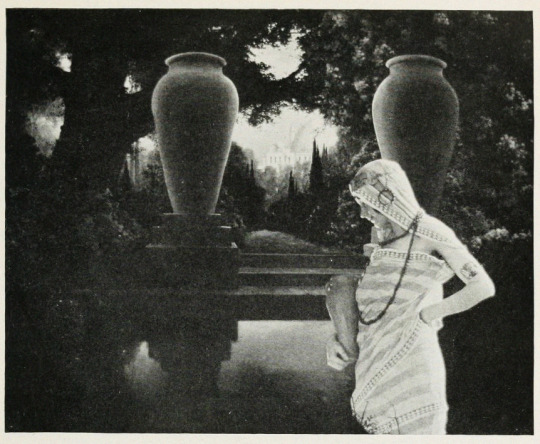
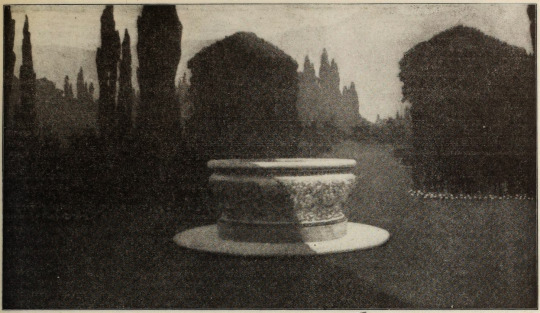

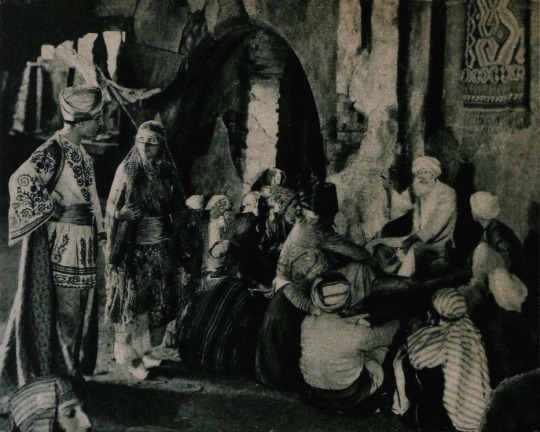


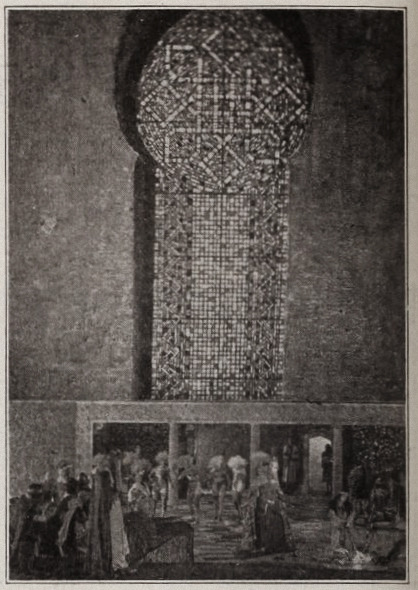
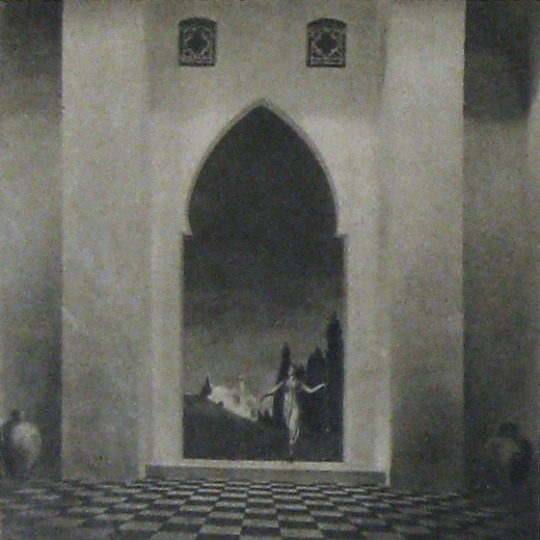
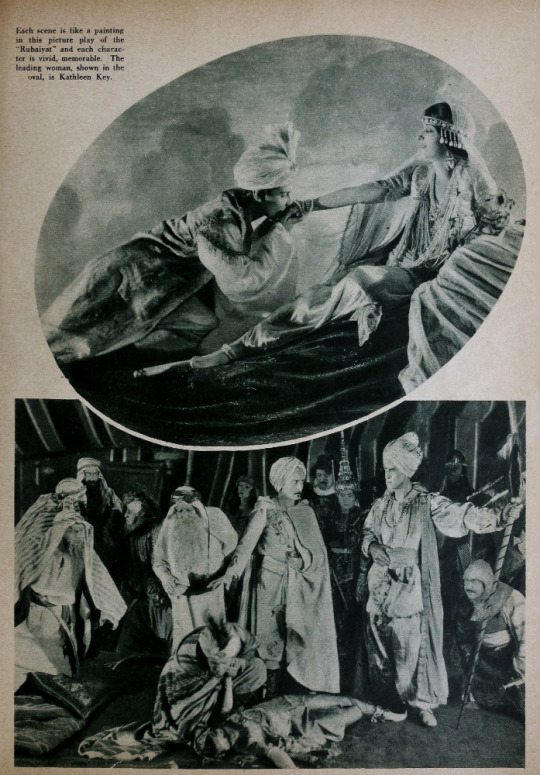
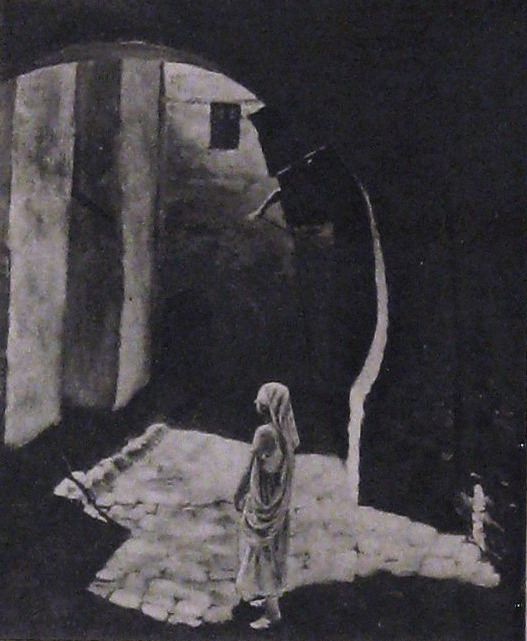

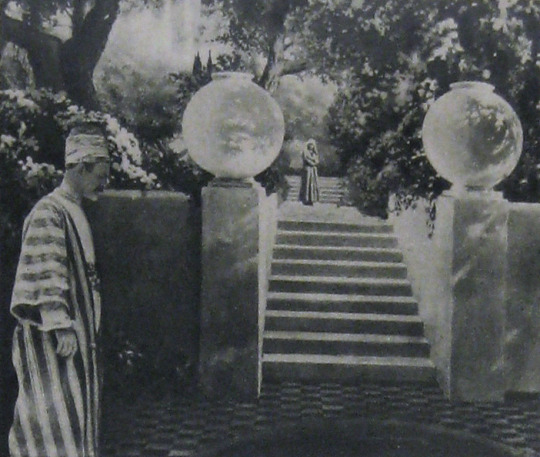
Alternate Titles: The Rubaiyat of Omar Khayyam, The Rubaiyat, Omar Khayyam, Omar
Direction: Ferdinand Pinney Earle; assisted by Walter Mayo
Scenario: Ferdinand P. Earle
Titles: Marion Ainslee, Ferdinand P. Earle (Omar), Louis Weadock (A Lover’s Oath)
Inspired by: The Rubaiyat of Omar Khayyam, as edited & translated by Edward FitzGerald
Production Manager: Winthrop Kelly
Camera: Georges Benoit
Still Photography: Edward S. Curtis
Special Photographic Effects: Ferdinand P. Earle, Gordon Bishop Pollock
Composer: Charles Wakefield Cadman
Editors: Arthur D. Ripley (The Rubaiyat of Omar Khayyam version), Ethel Davey & Ferdinand P. Earle (Omar / Omar Khayyam, the Director’s cut of 1922), Milton Sills (A Lover’s Oath)
Scenic Artists: Frank E. Berier, Xavier Muchado, Anthony Vecchio, Paul Detlefsen, Flora Smith, Jean Little Cyr, Robert Sterner, Ralph Willis
Character Designer: Louis Hels
Choreography: Ramon Novarro (credited as Ramon Samaniegos)
Technical Advisors: Prince Raphael Emmanuel, Reverend Allan Moore, Captain Dudley S. Corlette, & Captain Montlock or Mortlock
Studio: Ferdinand P. Earle Productions / The Rubaiyat, Inc. (Production) & Eastern Film Corporation (Distribution, Omar), Astor Distribution Corporation [States Rights market] (Distribution, A Lover’s Oath)
Performers: Frederick Warde, Edwin Stevens, Hedwiga Reicher, Mariska Aldrich, Paul Weigel, Robert Anderson, Arthur Carewe, Jesse Weldon, Snitz Edwards, Warren Rogers, Ramon Novarro (originally credited as Ramon Samaniegos), Big Jim Marcus, Kathleen Key, Charles A. Post, Phillippe de Lacy, Ferdinand Pinney Earle
Premiere(s): Omar cut: April 1922 The Ambassador Theatre, New York, NY (Preview Screening), 12 October 1923, Loew’s New York, New York, NY (Preview Screening), 2 February 1923, Hoyt’s Theatre, Sydney, Australia (Initial Release)
Status: Presumed lost, save for one 30 second fragment preserved by the Academy Film Archive, and a 2.5 minute fragment preserved by a private collector (Old Films & Stuff)
Length: Omar Khayyam: 8 reels , 76 minutes; A Lover’s Oath: 6 reels, 5,845 feet (though once listed with a runtime of 76 minutes, which doesn’t line up with the stated length of this cut)
Synopsis (synthesized from magazine summaries of the plot):
Omar Khayyam:
Set in 12th century Persia, the story begins with a preface in the youth of Omar Khayyam (Warde). Omar and his friends, Nizam (Weigel) and Hassan (Stevens), make a pact that whichever one of them becomes a success in life first will help out the others. In adulthood, Nizam has become a potentate and has given Omar a position so that he may continue his studies in mathematics and astronomy. Hassan, however, has grown into quite the villain. When he is expelled from the kingdom, he plots to kidnap Shireen (Key), the sheik’s daughter. Shireen is in love with Ali (Novarro). In the end it’s Hassan’s wife (Reicher) who slays the villain then kills herself.
A Lover’s Oath:
The daughter of a sheik, Shireen (Key), is in love with Ali (Novarro), the son of the ruler of a neighboring kingdom. Hassan covets Shireen and plots to kidnap her. Hassan is foiled by his wife. [The Sills’ edit places Ali and Shireen as protagonists, but there was little to no re-shooting done (absolutely none with Key or Novarro). So, most critics note how odd it is that all Ali does in the film is pitch woo, and does not save Shireen himself. This obviously wouldn’t have been an issue in the earlier cut, where Ali is a supporting character, often not even named in summaries and news items. Additional note: Post’s credit changes from “Vizier” to “Commander of the Faithful”]
Additional sequence(s) featured in the film (but I’m not sure where they fit in the continuity):
Celestial sequences featuring stars and planets moving through the cosmos
Angels spinning in a cyclone up to the heavens
A Potters’ shop sequence (relevant to a specific section of the poems)
Harem dance sequence choreographed by Novarro
Locations: palace gardens, street and marketplace scenes, ancient ruins
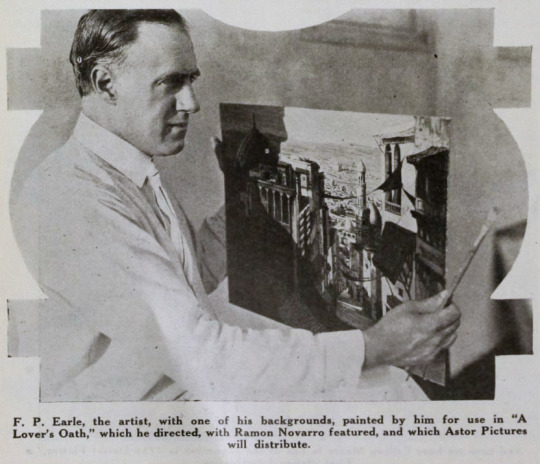
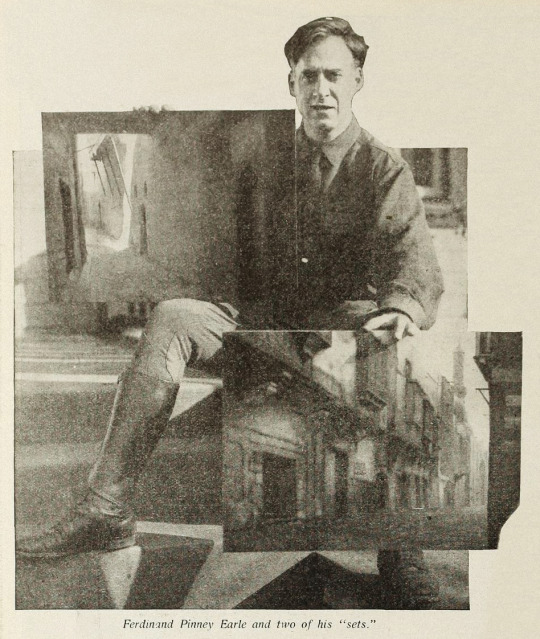
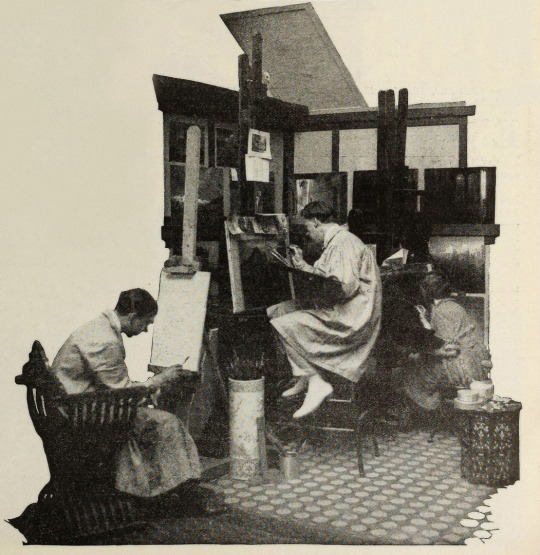


Points of Interest:
“The screen has been described as the last word in realism, but why confine it there? It can also be the last word in imaginative expression.”
Ferdinand P. Earle as quoted in Exhibitors Trade Review, 4 March 1922
The Rubaiyat of Omar Khayyam was a massive best seller. Ferdinand Pinney Earle was a classically trained artist who studied under William-Adolphe Bougueraeu and James McNeill Whistler in his youth. He also had years of experience creating art backgrounds, matte paintings, and art titles for films. Charles Wakefield Cadman was an accomplished composer of songs, operas, and operettas. Georges Benoit and Gordon Pollock were experienced photographic technicians. Edward S. Curtis was a widely renowned still photographer. Ramon Novarro was a name nobody knew yet—but they would soon enough.
When Earle chose The Rubaiyat as the source material for his directorial debut and collected such skilled collaborators, it seemed likely that the resulting film would be a landmark in the art of American cinema. Quite a few people who saw Earle’s Rubaiyat truly thought it would be:
William E. Wing writing for Camera, 9 September 1922, wrote:
“Mr. Earle…came from the world of brush and canvass, to spread his art upon the greater screen. He created a new Rubaiyat with such spiritual colors, that they swayed.” … “It has been my fortune to see some of the most wonderful sets that this Old Earth possesses, but I may truly say that none seized me more suddenly, or broke with greater, sudden inspiration upon the view and the brain, than some of Ferdinand Earle’s backgrounds, in his Rubaiyat. “His vision and inspired art seem to promise something bigger and better for the future screen.”
As quoted in an ad in Film Year Book, 1923:
“Ferdinand Earle has set a new standard of production to live up to.”
Rex Ingram
“Fifty years ahead of the time.”
Marshall Neilan
The film was also listed among Fritz Lang’s Siegfried, Chaplin’s Gold Rush, Fairbanks’ Don Q, Lon Chaney’s Phantom of the Opera and The Unholy Three, and Erich Von Stroheim’s Merry Widow by the National Board of Review as an exceptional film of 1925.
So why don’t we all know about this film? (Spoiler: it’s not just because it’s lost!)
The short answer is that multiple dubious legal challenges arose that prevented Omar’s general release in the US. The long answer follows BELOW THE JUMP!
Earle began the project in earnest in 1919. Committing The Rubaiyat to film was an ambitious undertaking for a first-time director and Earle was striking out at a time when the American film industry was developing an inferiority complex about the level of artistry in their creative output. Earle was one of a number of artists in the film colony who were going independent of the emergent studio system for greater protections of their creative freedoms.
In their adaptation of The Rubaiyat of Omar Khayyam, Earle and Co. hoped to develop new and perfect existing techniques for incorporating live-action performers with paintings and expand the idea of what could be accomplished with photographic effects in filmmaking. The Rubaiyat was an inspired choice. It’s not a narrative, but a collection of poetry. This gave Earle the opportunity to intersperse fantastical, poetic sequences throughout a story set in the lifetime of Omar Khayyam, the credited writer of the poems. In addition to the fantastic, Earle’s team would recreate 12th century Persia for the screen.
Earle was convinced that if his methods were perfected, it wouldn’t matter when or where a scene was set, it would not just be possible but practical to put on film. For The Rubaiyat, the majority of shooting was done against black velvet and various matte photography and multiple exposure techniques were employed to bring a setting 800+ years in the past and 1000s of miles removed to life before a camera in a cottage in Los Angeles.
Note: If you’d like to learn a bit more about how these effects were executed at the time, see the first installment of How’d They Do That.
Unfortunately, the few surviving minutes don’t feature much of this special photography, but what does survive looks exquisite:
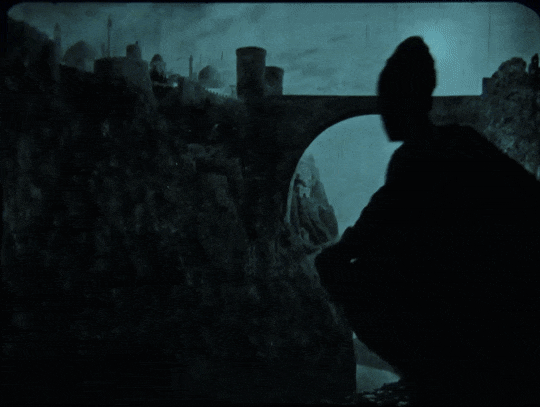
see all gifs here
Earle, knowing that traditional stills could not be taken while filming, brought in Edward S. Curtis. Curtis developed techniques in still photography to replicate the look of the photographic effects used for the film. So, even though the film hasn’t survived, we have some pretty great looking representations of some of the 1000s of missing feet of the film.

Nearly a year before Curtis joined the crew, Earle began collaboration with composer Charles Wakefield Cadman. In another bold creative move, Cadman and Earle worked closely before principal photography began so that the score could inform the construction and rhythm of the film and vice versa.
By the end of 1921 the film was complete. After roughly 9 months and the creation of over 500 paintings, The Rubaiyat was almost ready to meet its public. However, the investors in The Rubaiyat, Inc., the corporation formed by Earle to produce the film, objected to the ample reference to wine drinking (a comical objection if you’ve read the poems) and wanted the roles of the young lovers (played by as yet unknown Ramon Novarro and Kathleen Key) to be expanded. The dispute with Earle became so heated that the financiers absconded with the bulk of the film to New York. Earle filed suit against them in December to prevent them from screening their butchered and incomplete cut. Cadman supported Earle by withholding the use of his score for the film.
Later, Eastern Film Corp. brokered a settlement between the two parties, where Earle would get final cut of the film and Eastern would handle its release. Earle and Eastern agreed to change the title from The Rubaiyat of Omar Khayyam to simply Omar. Omar had its first official preview in New York City. It was tentatively announced that the film would have a wide release in the autumn.
However, before that autumn, director Norman Dawn launched a dubious patent-infringement suit against Earle and others. Dawn claimed that he owned the sole right to use multiple exposures, glass painting for single exposure, and other techniques that involved combining live action with paintings. All the cited techniques had been widespread in the film industry for a decade already and eventually and expectedly Dawn lost the suit. Despite Earle’s victory, the suit effectively put the kibosh on Omar’s release in the US.
Earle moved on to other projects that didn’t come to fruition, like a Theda Bara film and a frankly amazing sounding collaboration with Cadman to craft a silent-film opera of Faust. Omar did finally get a release, albeit only in Australia. Australian news outlets praised the film as highly as those few lucky attendees of the American preview screenings did. The narrative was described as not especially original, but that it was good enough in view of the film’s artistry and its imaginative “visual phenomena” and the precision of its technical achievement.
One reviewer for The Register, Adelaide, SA, wrote:
“It seems almost an impossibility to make a connected story out of the short verse of the Persian of old, yet the producer of this classic of the screen… has succeeded in providing an entertainment that would scarcely have been considered possible. From first to last the story grips with its very dramatic intensity.”
While Omar’s American release was still in limbo, “Ramon Samaniegos” made a huge impression in Rex Ingram’s Prisoner of Zenda (1922, extant) and Scaramouche (1923, extant) and took on a new name: Ramon Novarro. Excitement was mounting for Novarro’s next big role as the lead in the epic Ben-Hur (1925, extant) and the Omar project was re-vivified.
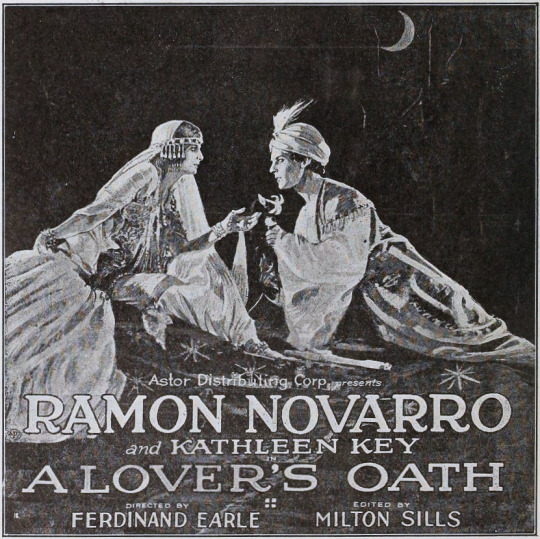
A new company, Astor Distribution Corp., was formed and purchased the distribution rights to Omar. Astor hired actor (note, not an editor) Milton Sills to re-cut the film to make Novarro and Key more prominent. The company also re-wrote the intertitles, reduced the films runtime by more than ten minutes, and renamed the film A Lover’s Oath. Earle had moved on by this point, vowing to never direct again. In fact, Earle was indirectly working with Novarro and Key again at the time, as an art director on Ben-Hur!
Despite Omar’s seemingly auspicious start in 1920, it was only released in the US on the states rights market as a cash-in on the success of one of its actors in a re-cut form five years later.
That said, A Lover’s Oath still received some good reviews from those who did manage to see it. Most of the negative criticism went to the story, intertitles, and Sills’ editing.
What kind of legacy could/should Omar have had? I’m obviously limited in my speculation by the fact that the film is lost, but there are a few key facts about the film’s production, release, and timing to consider.
The production budget was stated to be $174,735. That is equivalent to $3,246,994.83 in 2024 dollars. That is a lot of money, but since the production was years long and Omar was a period film set in a remote locale and features fantastical special effects sequences, it’s a modest budget. For contemporary perspective, Robin Hood (1922, extant) cost just under a million dollars to produce and Thief of Bagdad (1924, extant) cost over a million. For a film similarly steeped in spectacle to have nearly 1/10th of the budget is really very noteworthy. And, perhaps if the film had ever had a proper release in the US—in Earle’s intended form (that is to say, not the Sills cut)—Omar may have made as big of a splash as other epics.
It’s worth noting here however that there are a number of instances in contemporary trade and fan magazines where journalists off-handedly make this filmmaking experiment about undermining union workers. Essentially implying that that value of Earle’s method would be to continue production when unionized workers were striking. I’m sure that that would absolutely be a primary thought for studio heads, but it certainly wasn’t Earle’s motivation. Often when Earle talks about the method, he focuses on being able to film things that were previously impossible or impracticable to film. Driving down filming costs from Earle’s perspective was more about highlighting the artistry of his own specialty in lieu of other, more demanding and time-consuming approaches, like location shooting.
This divide between artists and studio decision makers is still at issue in the American film and television industry. Studio heads with billion dollar salaries constantly try to subvert unions of skilled professionals by pursuing (as yet) non-unionized labor. The technical developments of the past century have made Earle’s approach easier to implement. However, just because you don’t have to do quite as much math, or time an actor’s movements to a metronome, does not mean that filming a combination of painted/animated and live-action elements does not involve skilled labor.
VFX artists and animators are underappreciated and underpaid. In every new movie or TV show you watch there’s scads of VFX work done even in films/shows that have mundane, realistic settings. So, if you love a film or TV show, take the effort to appreciate the work of the humans who made it, even if their work was so good you didn’t notice it was done. And, if you’ve somehow read this far, and are so out of the loop about modern filmmaking, Disney’s “live-action” remakes are animated films, but they’ve just finagled ways to circumvent unions and low-key delegitimize the skilled labor of VFX artists and animators in the eyes of the viewing public. Don’t fall for it.
VFX workers in North America have a union under IATSE, but it’s still developing as a union and Marvel & Disney workers only voted to unionize in the autumn of 2023. The Animation Guild (TAG), also under the IATSE umbrella, has a longer history, but it’s been growing rapidly in the past year. A strike might be upcoming this year for TAG, so keep an eye out and remember to support striking workers and don’t cross picket lines, be they physical or digital!
Speaking of artistry over cost-cutting, I began this post with a mention that in the early 1920s, the American film industry was developing an inferiority complex in regard to its own artistry. This was in comparison to the European industries, Germany’s being the largest at the time. It’s frustrating to look back at this period and see acceptance of the opinion that American filmmakers weren’t bringing art to film. While yes, the emergent studio system was highly capitalistic and commercial, that does not mean the American industry was devoid of home-grown artists.
United Artists was formed in 1919 by Douglas Fairbanks, Charlie Chaplin, Mary Pickford, and D.W. Griffith precisely because studios were holding them back from investing in their art—within the same year that Earle began his Omar project. While salaries and unforgiving production schedules were also paramount concerns in the filmmakers going independent, a primary impetus was that production/distribution heads exhibited too much control over what the artists were trying to create.
Fairbanks was quickly expanding his repertoire in a more classical and fantastic direction. Cecil B. DeMille made his first in a long and very successful string of ancient epics. And the foreign-born children of the American film industry, Charlie Chaplin, Rex Ingram, and Nazimova, were poppin’ off! Chaplin was redefining comedic filmmaking. Ingram was redefining epics. Nazimova independently produced what is often regarded as America’s first art film, Salome (1923, extant), a film designed by Natacha Rambova, who was *gasp* American. Earle and his brother, William, had ambitious artistic visions of what could be done in the American industry and they also had to self-produce to get their work done.
Meanwhile, studio heads, instead of investing in the artists they already had contracts with, tried to poach talent from Europe with mixed success (in this period, see: Ernst Lubitsch, F.W. Murnau, Benjamin Christensen, Mauritz Stiller, Victor Sjöström, and so on). I’m in no way saying it was the wrong call to sign these artists, but all of these filmmakers, even if they found success in America, had stories of being hired to inject the style and artistry that they developed in Europe into American cinema, and then had their plans shot down or cut down to a shadow of their creative vision. Even Stiller, who tragically died before he had the opportunity to establish himself in the US, faced this on his first American film, The Temptress (1926, extant), on which he was replaced. Essentially, the studio heads’ actions were all hot air and spite for the filmmakers who’d gone independent.

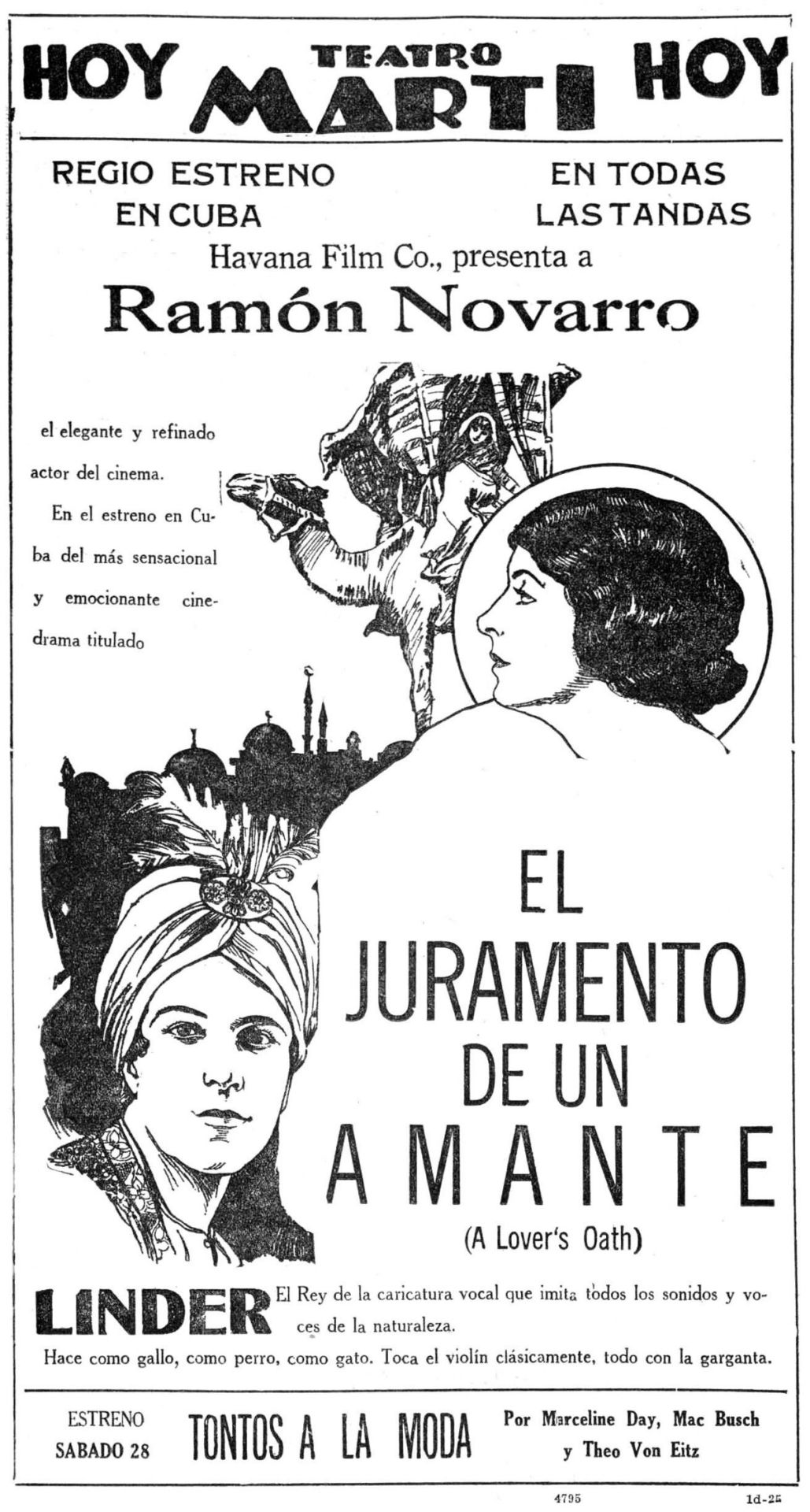
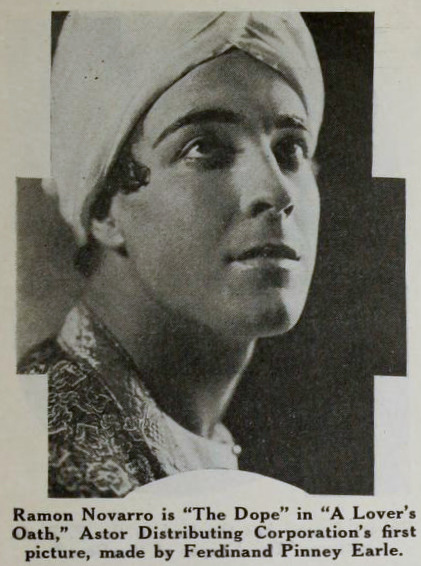
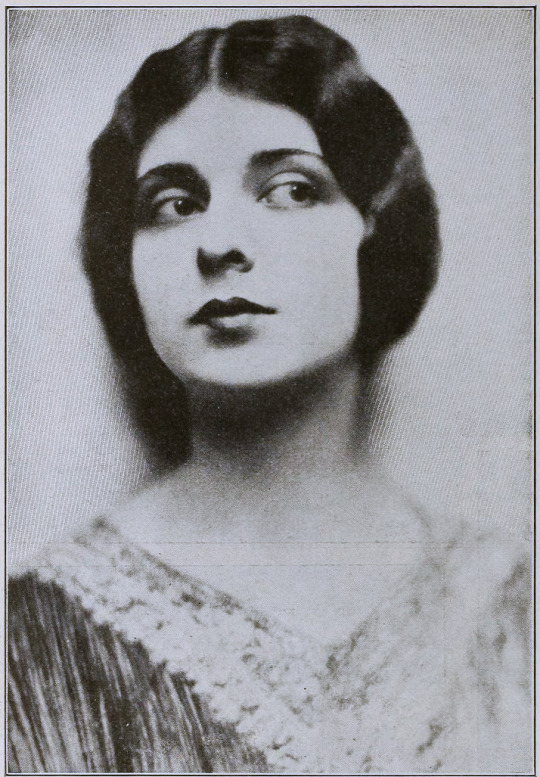
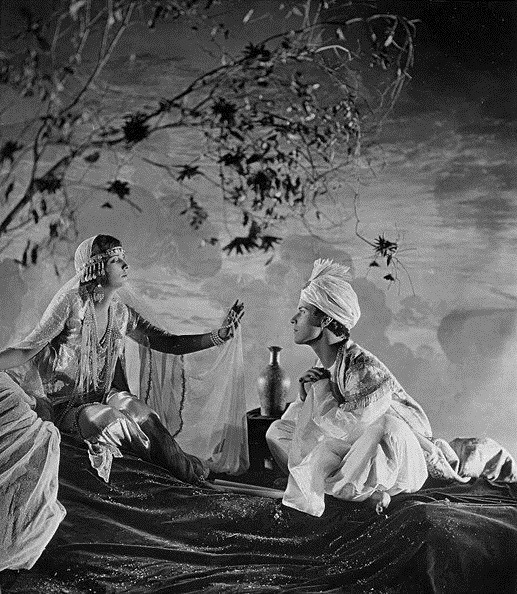
Finally I would like to highlight Ferdinand Earle’s statement to the industry, which he penned for from Camera in 14 January 1922, when his financial backers kidnapped his film to re-edit it on their terms:
MAGNA CHARTA
Until screen authors and producers obtain a charter specifying and guaranteeing their privileges and rights, the great slaughter of unprotected motion picture dramas will go merrily on.
Some of us who are half artists and half fighters and who are ready to expend ninety per cent of our energy in order to win the freedom to devote the remaining ten per cent to creative work on the screen, manage to bring to birth a piteous, half-starved art progeny.
The creative artist today labors without the stimulus of a public eager for his product, labors without the artistic momentum that fires the artist’s imagination and spurs his efforts as in any great art era.
Nowadays the taint of commercialism infects the seven arts, and the art pioneer meets with constant petty worries and handicaps.
Only once in a blue moon, in this matter-of-fact, dollar-wise age can the believer in better pictures hope to participate in a truely [sic] artistic treat.
In the seven years I have devoted to the screen, I have witnessed many splendid photodramas ruined by intruding upstarts and stubborn imbeciles. And I determined not to launch the production of my Opus No. 1 until I had adequately protected myself against all the usual evils of the way, especially as I was to make an entirely new type of picture.
In order that my film verison [sic] of the Rubaiyat of Omar Khayyam might be produced under ideal conditions and safeguarded from intolerable interferences and outside worries, I entered into a contract with the Rubaiyat, Inc., that made me not only president of the corporation and on the board of directors, but which set forth that I was to be author, production manager, director, cutter and film editor as well as art director, and that no charge could be made against the production without my written consent, and that my word was to be final on all matters of production. The late George Loane Tucker helped my attorney word the contract, which read like a splendid document.
Alas, I am now told that only by keeping title to a production until it is declared by yourself to be completed is it safe for a scenario writer, an actor or a director, who is supposedly making his own productions, to contract with a corporation; otherwise he is merely the servant of that corporation, subject at any moment to discharge, with the dubious redress of a suit for damages that can with difficulty be estimated and proven.
Can there be any hope of better pictures as long as contracts and copyrights are no protection against financial brigands and bullies?
We have scarcely emerged from barbarism, for contracts, solemnly drawn up between human beings, in which the purposes are set forth in the King’s plainest English, serve only as hurdles over which justice-mocking financiers and their nimble attorneys travel with impunity, riding rough shod over the author or artist who cannot support a legal army to defend his rights. The phrase is passed about that no contract is invioliable [sic]—and yet we think we have reached a state of civilization!
The suit begun by my attorneys in the federal courts to prevent the present hashed and incomplete version of my story from being released and exhibited, may be of interest to screen writers. For the whole struggle revolves not in the slightest degree around the sanctity of the contract, but centers around the federal copyright of my story which I never transferred in writing otherwise, and which is being brazenly ignored.
Imagine my production without pictorial titles: and imagine “The Rubaiyat” with a spoken title as follows, “That bird is getting to talk too much!”—beside some of the immortal quatrains of Fitzgerald!
One weapon, fortunately, remains for the militant art creator, when all is gone save his dignity and his sense of humor; and that is the rapier blade of ridicule, that can send lumbering to his retreat the most brutal and elephant-hided lord of finance.
How edifying—the tableau of the man of millions playing legal pranks upon men such as Charles Wakefield Cadman, Edward S. Curtis and myself and others who were associated in the bloody venture of picturizing the Rubaiyat! It has been gratifying to find the press of the whole country ready to champion the artist’s cause.
When the artist forges his plowshare into a sword, so to speak, he does not always put up a mean fight.
What publisher would dare to rewrite a sonnet of John Keats or alter one chord of a Chopin ballade?
Creative art of a high order will become possible on the screen only when the rights of established, independent screen producers, such as Rex Ingram and Maurice Tourneur, are no longer interferred with and their work no longer mutilated or changed or added to by vandal hands. And art dramas, conceived and executed by masters of screen craft, cannot be turned out like sausages made by factory hands. A flavor of individuality and distinction of style cannot be preserved in machine-made melodramas—a drama that is passed from hand to hand and concocted by patchworkers and tinkerers.
A thousand times no! For it will always be cousin to the sausage, and be like all other—sausages.
The scenes of a master’s drama may have a subtle pictorial continuity and a power of suggestion quite like a melody that is lost when just one note is changed. And the public is the only test of what is eternally true or false. What right have two or three people to deprive millions of art lovers of enjoying an artist’s creation as it emerged from his workshop?
“The Rubaiyat” was my first picture and produced in spite of continual and infernal interferences. It has taught me several sad lessons, which I have endeavored in the above paragraphs to pass on to some of my fellow sufferers. It is the hope that I am fighting, to a certain extent, their battle that has given me the courage to continue, and that has prompted me to write this article. May such hubbubs eventually teach or inforce a decent regard for the rights of authors and directors and tend to make the existence of screen artisans more secure and soothing to the nerves.
FERDINAND EARLE.
---
☕Appreciate my work? Buy me a coffee! ☕
Transcribed Sources & Annotations over on the WMM Blog!
See the Timeline for Ferdinand P. Earle's Rubaiyat Adaptation
#1920s#1923#1925#omar khayyam#ferdinand pinney earle#ramon novarro#independent film#american film#silent cinema#silent era#silent film#classic cinema#classic movies#classic film#film history#history#Charles Wakefield Cadman#cinematography#The Rubaiyat#cinema#film#lost film
50 notes
·
View notes
Text
Dread by the Decade: Night Monster
👻 You can support me on Ko-Fi! ❤️

★★
Plot: A man invites the doctors responsible for his declining health to his isolated mansion, where they are picked off one-by-one.
Review: Despite decent aesthetics, this film's horror is too sparse and its pace too dry to make up for its rather silly main idea.

Year: 1942 Genre: Supernatural Horror, Mystery, Gothic Country: United States Language: English Runtime: 1 hour 13 minutes

Director: Ford Beebe Writer: Clarence Upson Young Cinematographer: Charles Van Enger Editor: Jack Otterson Composer: Hans J. Salter Cast: Irene Hervey, Don Porter, Ralph Morgan, Fay Helm, Lionel Atwill, Frank Reicher, Francis Pierlot, Nils Asther, Bela Lugosi, Doris Lloyd

-----
Story: 2/5 - Despite some genuine mystery, it grows plodding, consisting mostly of people delivering dry dialogue before a rushed climax.
Performances: 3/5 - The cast is mostly natural, save for Asther, whose portrayal of an Indian man is laughable.
Cinematography: 3.5/5 - Good atmospheric lighting. The fog shots are surprisingly decent.
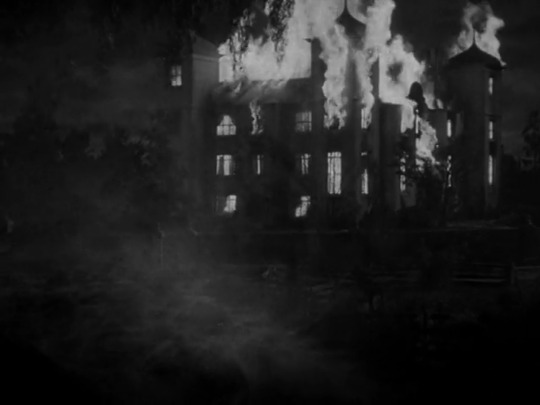
Editing: 3/5 - Smooth and coherent.
Music: 2.5/5
Effects & Props: 2.5/5 - Fluctuates between decent and cheap.
Sets: 4/5 - The ornate mansion is lovely and elaborate, with a particularly striking stairwell set.
Costumes, Hair, & Make-Up: 3/5
youtube
Trigger Warnings:
Minor violence
Suicide
Attempted sexual assault
Sexual harassment
Brownface
Inaccurate, racist portrayal of Hindu beliefs
Misogyny (uncritical)
Ableism (uncritical)
#Night Monster (1942)#Night Monster#Ford Beebe#American#supernatural horror#gothic#Dread by the Decade#review#1940s
3 notes
·
View notes
Text
On This Day
17 January 1911
The Scarecrow; or, The Glass of Truth by Percy MacKaye was first performed on Broadway at the Garrick Theatre. It starred Frank Reicher in the lead as Lord Ravensbane.

It was originally published in 1908 and had been performed before it appeared on Broadway. It was loosely based on the poem Feathertop by Nathaniel Hawthorne, but MacKaye deviated from the source material considerably. The play takes place in late 17th century Massachusetts, not far from where the Salem Witch Trials were taking place, although the actual language used in the play is sort of a faux-17th century English mixed with then-modern English.
#theatre#theater#history#dramatist#literature#stage#dramatic literature#on this date#on this day#this day in history#percy mackaye#the scarecrow#feathertop#nathaniel hawthorne#garrick theatre#broadway#otd#light academia
2 notes
·
View notes
Photo




Lost and Won (Frank Reicher, 1917)
70 notes
·
View notes
Text
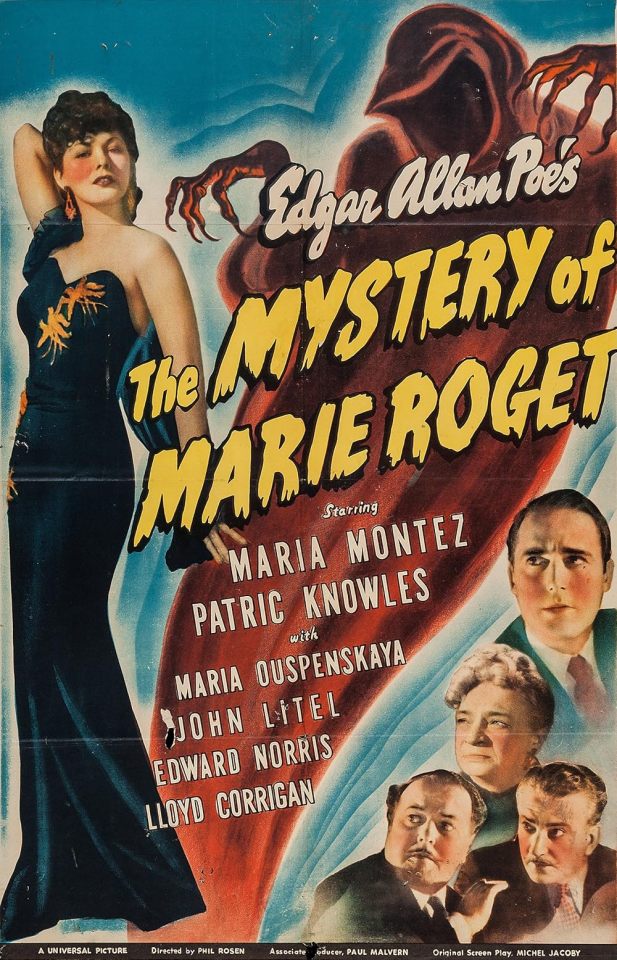
Films Watched in 2025: 9. The Mystery of Marie Roget (1942) - Dir. Phil Rosen
#The Mystery of Marie Roget#Phil Rosen#Patrick Knowles#Maria Montez#Maria Ouspenskaya#John Litel#Edward Norris#Lloyd Corrigan#Frank Reicher#Nell O'Day#Edgar Allan Poe#Films Watched in 2025#My Post
1 note
·
View note
Text
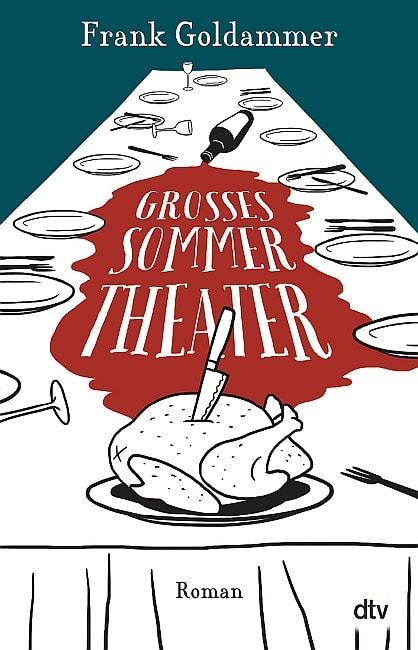
In dieser Episode bespreche ich das Buch »Großes Sommertheater« von Frank Goldammer, das ein packendes und humorvolles Familiendrama entfaltet. Der Klappentext gibt bereits einen ersten Eindruck von der Ausgangssituation: Patriarch Joseph, ein reicher, kranker Mann, lädt seine gesamte Familie an die Ostsee ein, um sicherzustellen, dass alle anwesend sind, während die Frage des Erbes auf dem Tisch liegt. Die sommerliche Idylle wird jedoch schnell von den Spannungen und Konflikten innerhalb der Familie überschattet, die durch alte Rivalitäten und den drängenden Wunsch, einen Teil des Vermögens zu sichern, angeheizt werden. Die unterschiedlichen Charaktere kommen im Laufe der Handlung stärker zur Geltung. Die Söhne, Harald und Erwin, repräsentieren zwei gegensätzliche Lebenswege: der eine war bereits im Gefängnis, während der andere eine politische Karriere in Berlin verfolgt. Und das schwarze Schaf der Familie, Uwe, bringt mit seiner attraktiven Frau zusätzliche Komplikationen ins Spiel. Diese Konstellation verspricht nicht nur einen unterhaltsamen Familientrubel, sondern birgt auch ernsthafte Perspektiven auf die Themen Identität, soziale Unterschiede und die Herausforderungen, denen sich jeder Einzelne stellen muss. Ein besonderer Fokus liegt auf den Kindern, insbesondere auf dem kleinen Tyrannen Rocco sowie den Teenagern Tom und Vanessa, deren schüchterne Interaktionen für zusätzliche humorvolle und gleichzeitig nachdenkliche Momente sorgen. Rocco, als jüngstes Mitglied, sorgt für unvorhersehbare Situationen, die die Dynamik in der Villa anheizen. Jedes Verhalten wird durch die hintergründigen Spannungen innerhalb der Familie beeinflusst, die nicht nur in familiären Feiern, sondern in jeder Interaktion sichtbar werden. Frank Goldammer überrascht in diesem Buch mit einem rabenschwarzen Humor und einem unverblümten Blick auf menschliche Schwächen, was das Lesen zu einem eindrucksvollen Erlebnis macht. Seine Fähigkeit, in verschiedenen Genres zu schreiben und mit Themen zu experimentieren, macht »Großes Sommertheater« zu einem besonderen Lesevergnügen. Ich hoffe, dass auch ihr die Gelegenheit nutzt, diesen Roman zu entdecken, und damit verbunden, die verschiedenen Facetten von Goldammers Schreiben zu erkunden. Read the full article
0 notes
Text










Night Monster (1942)
"Why don't you have Millie do that, Miss Judd? That's a maid's work, not a housekeeper's. You needn't answer because I know the reason: that spot under your hand is blood and you didn't want anyone to know."
"Blood? Ridiculous."
"Yes, it is ridiculous. It couldn't be blood, but it is. I've seen those spots before and I've seen you trying to scrub them out because you knew what they were. Blood, the whole house reeks of it. The air is charged with death and hatred and something that's unclean!"
#night monster#1942#horror film#american cinema#ford beebe#clarence upson young#bela lugosi#lionel atwill#leif erickson#irene hervey#ralph morgan#don porter#nils asther#fay helm#frank reicher#doris lloyd#francis pierlot#robert homans#janet shaw#eddy waller#cyril delevanti#thoroughly enjoyable haunted house whatnot that's obviously trying to do too much but still comes out the other side a Good Time#we've got mishaps and mayhem and murders and mesmerism (not to mention medical malpractice) and all squeezed into a little over 70 minutes#(sigh those were the days). Lugosi and Atwill take top billing despite only really having supporting roles (Atwill in particular could be#better described as a cameo) but both are clearly having fun in their roles and nobody is taking this too seriously (how could they?)#gets a little messy in the back half and ends with some crucial weirdness just kind of handwaved away without proper explanation#but I'll forgive it because it's just so concerned with being a silly fun time that of course its brains fall out of the plot. one element#of the plot (a sex pest chauffeur who relentlessly pursues every woman in the film in a sinister fashion) could probably have been trimmed#back but this is still a hugely charming and (to me) entirely irresistible bit of old spooky hokum
7 notes
·
View notes